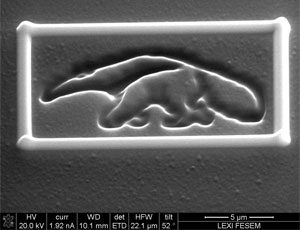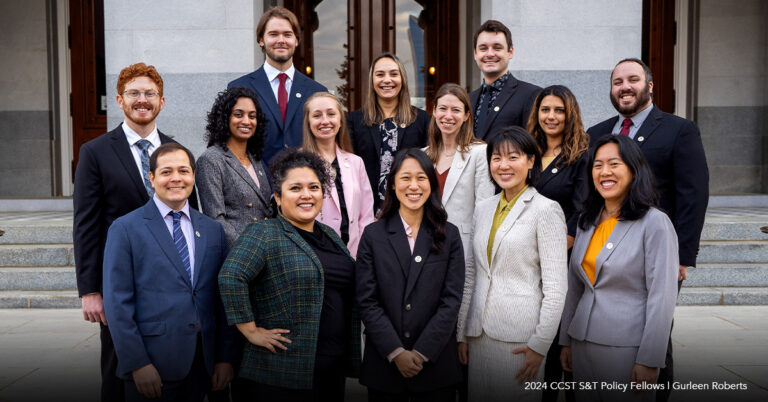Update: Applications for the CCST Science & Technology Policy Fellowship Have Closed
Irvine Materials Research Institute To Expand Research Opportunities in Southern California
June 15, 2015 | CCST Newsroom | Contact: M. Daniel DeCillis

A new institute for materials research at the University of California, Irvine (UCI) is poised to become one of the leading such research centers in the state, offering significant opportunities to academic and industrial researchers in a wide range of disciplines in the Southern California area and beyond.
“The research community in our area is expanding,” said Professor Matt Law, Associate Director of the Irvine Materials Research Institute (IMRI). “Orange County is home to many small to medium technology companies doing materials, medical, and semiconductor research. Having access to instrumentation and expertise such as what we are building at IMRI will be a significant advantage.”
IMRI manages a cluster of user facilities being built around the well-established Laboratory for Electron and X-ray Instrumentation (LEXI) at UCI. LEXI is a university-wide shared user facility that is open to all researchers and focused on the atomic-to-macroscopic imaging of materials, chemical nano- and microanalysis, surface spectroscopy, crystal structure, surface topography, and nanoscale materials fabrication. LEXI offers a wide range of materials characterization instrumentation and techniques, including scanning electron microscopy (SEM), focused ion beam (FIB), electron beam lithography (EBL), electrical and optical nanoprobing, transmission electron microscopy (TEM), electron and ion surface spectroscopy and imaging, atomic force microscopy (AFM), X-ray diffraction (XRD), 3D X-ray microscopy, and structural dynamics, together with a comprehensive specimen preparation facility. Each type of instrumentation allows users to analyze and characterize materials for a wide range of research and development applications.
“It can be difficult to do materials research piecemeal,” said Reginald Penner, Chancellor’s Professor of Chemistry at UCI. “It is much more efficient for researchers to get data from multiple types of co-located instrumentation such as what we have to offer here.” LEXI already has approximately three hundred users from UCI research groups, faculty and students at neighboring universities, and over 50 companies.
Additional facilities are being established at UCI under the expanded umbrella of IMRI, including a new surface science facility and a world-class TEM facility housing four state-of-the-art TEMs, two of which are the highest-performing TEMs available for characterizing and analyzing materials to determine their potential for advanced applications. Another facility focused on thermal, elemental, and physical property measurements is in the early planning stage.
“We have been building up our instrumentation facilities over the past several years,” said Law. “Adding new instrumentation and upgrading our existing facilities is an important part of our business plan. The effective lifetime for some instruments is no longer than eight years, so continuous reinvestment is essential to making sure the IMRI facilities can continue to provide top-tier research services for our users.”
California is already known as a leader in materials research, with more of the world’s top materials research scientists than any other U.S. state and major materials research centers at Stanford, UC Berkeley, and UC Santa Barbara, where the Materials Research Center is located. IMRI will extend cutting edge materials research capabilities to an even larger range of the California high-tech community.
The interdisciplinary instrumentation hub has received funding from a number of sources, including UCI, the National Science Foundation (NSF), and the California Institute for Telecommunications and Information Technology (Calit2), an academic research institution jointly run by the University of California, San Diego and UCI. In order to keep the facility accessible to a wide range of users in academia and industry, user fees are relatively low, designed to cover facilities operations, and the facilities are staffed by Ph.D. staff scientists ready to assist external users.
By building facilities with excellent capabilities and user-friendly operations in a dynamic research environment, UCI is designing IMRI to be the best materials characterization center in Southern California.
“We have world-class facilities and are open for business,” said Penner.
For current information on available facilities and how to arrange for access to services, please visit the LEXI website.






